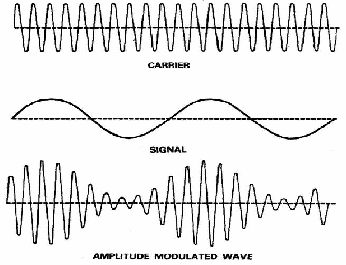The are tow basic methods of producing radio waves by radio transmitters: amplitude modulation (AM), and frequency modulation (FM).
Amplitude modulation superimposes the signal to be transmitted onto a high frequency carrier wave. The displacement of the resulting wave is the sum of the displacements of the individual waves.

Frequency modulation varies the frequency of the modulated wave instead of the amplitude.

Frequency modulated waves are less prone to interference than amplitude modulated waves, and are frequently used by music stations which require high quality signals. In contrast, radio stations consisting of news and discussion programs find amplitude modulation sufficient.

